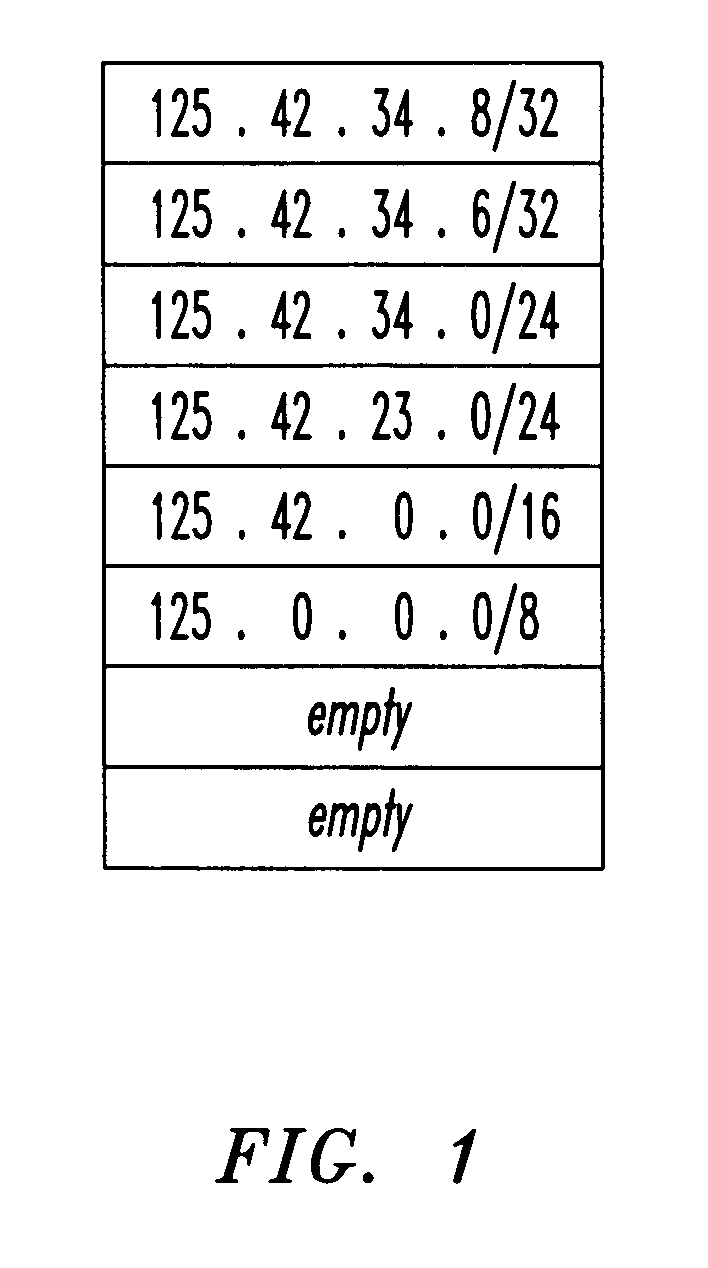Memory management for ternary CAMs and the like
a technology of memory management and ternary cams, applied in the field of computer memory, can solve problems such as adversely affecting matching and complex situations
- Summary
- Abstract
- Description
- Claims
- Application Information
AI Technical Summary
Benefits of technology
Problems solved by technology
Method used
Image
Examples
Embodiment Construction
[0032] Reference herein to “one embodiment” or “an embodiment” means that a particular feature, structure, or characteristic described in connection with the embodiment can be included in at least one embodiment of the invention. The appearances of the phrase “in one embodiment” in various places in the specification are not necessarily all referring to the same embodiment, nor are separate or alternative embodiments necessarily mutually exclusive of other embodiments.
Memory System
[0033]FIG. 2 represents a memory system 200 having a ternary content-addressable memory (T-CAM) 202 and a memory manager 204, according to one embodiment of the present invention. In one possible application, T-CAM 202 is used to store an IPv4 forwarding table in which each entry has a 32-bit IP address and a mask indicating the number of bits required for a match, as described previously in the context of FIG. 1. In this application, memory manager 204 manages the organization of the table entries stor...
PUM
 Login to View More
Login to View More Abstract
Description
Claims
Application Information
 Login to View More
Login to View More - R&D
- Intellectual Property
- Life Sciences
- Materials
- Tech Scout
- Unparalleled Data Quality
- Higher Quality Content
- 60% Fewer Hallucinations
Browse by: Latest US Patents, China's latest patents, Technical Efficacy Thesaurus, Application Domain, Technology Topic, Popular Technical Reports.
© 2025 PatSnap. All rights reserved.Legal|Privacy policy|Modern Slavery Act Transparency Statement|Sitemap|About US| Contact US: help@patsnap.com



